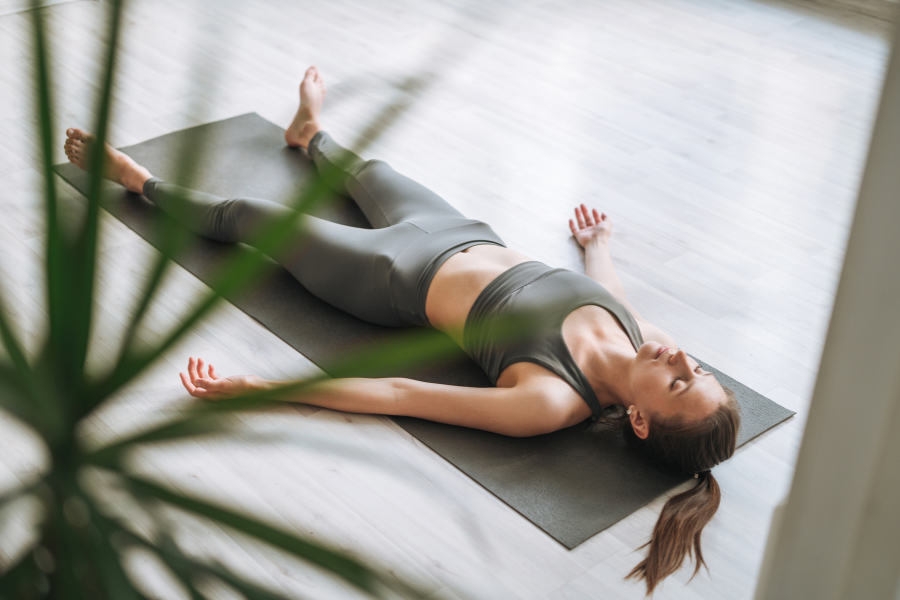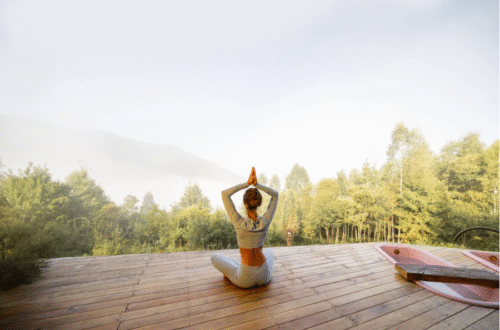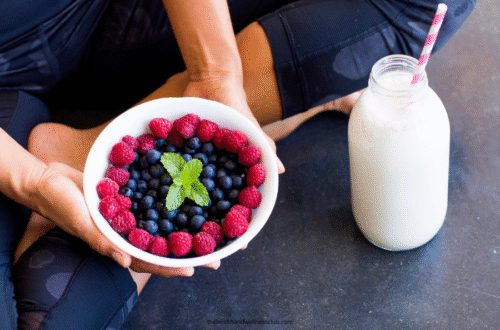Savasana Isn’t Just a Nap—It’s a Game-Changer
Most people see savasana as the part of class where you lie down and zone out. It looks like the easiest pose in yoga, right? No stretching, no balancing, no sweating. Just stillness.
But here’s the truth: savasana is where the real magic happens. It’s the moment your body absorbs everything you’ve practiced. It’s where your nervous system resets, your breath deepens, and your mind finally gets quiet.
Once I started paying attention to how I felt after savasana—more grounded, more clear, more me—I realized this pose isn’t just a rest. It’s a reset. And it might just be the most powerful part of the entire practice.
What Is Savasana, Really?
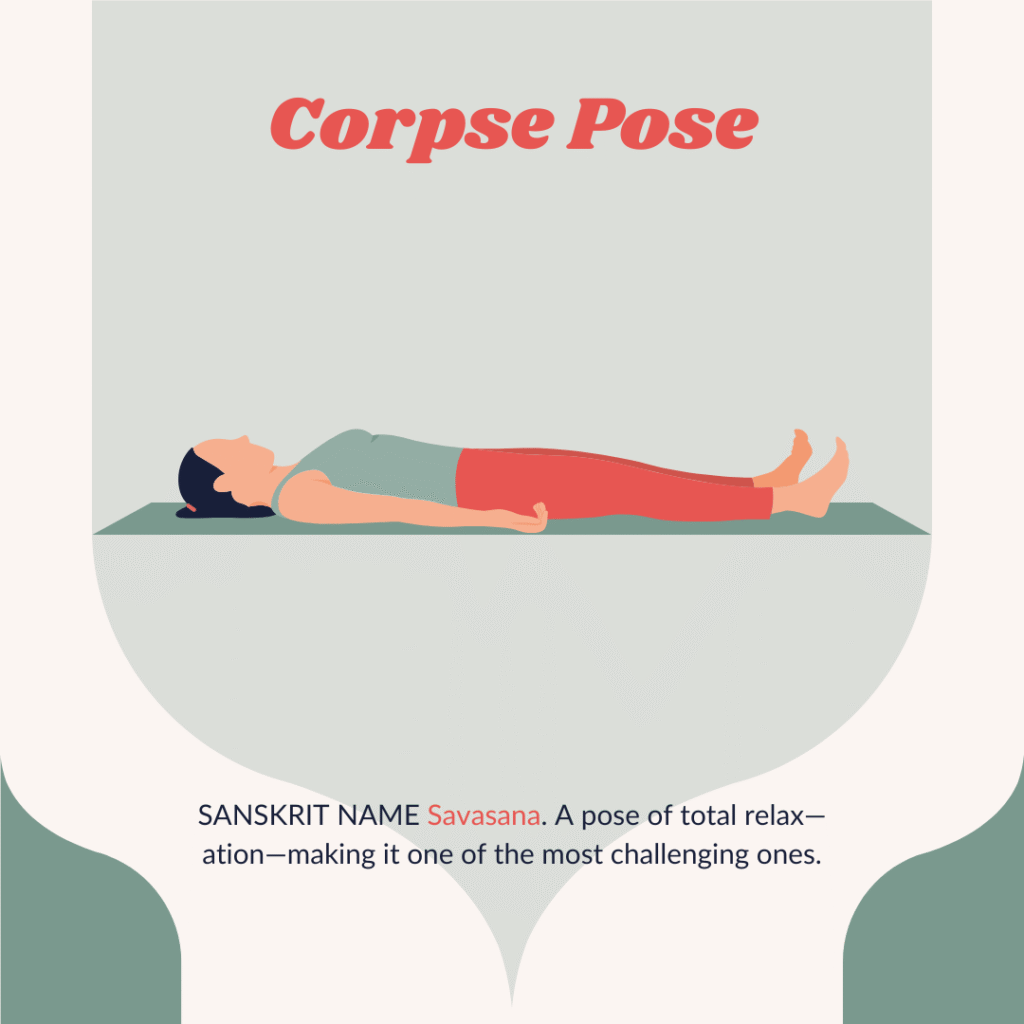
Savasana, also called Corpse Pose, is the final resting pose in most yoga classes. You lie flat on your back, arms relaxed at your sides, palms facing up, feet gently falling outward. Sounds simple, right?
But here’s the twist: doing nothing is actually really hard. You’re not supposed to sleep, scroll your phone, or mentally plan dinner. You’re meant to be fully present, fully relaxed, and fully still.
This pose is where your body integrates everything you just did. It’s the moment your nervous system gets to recalibrate, your breath slows, and your mind settles.
The Science Behind Savasana
Let’s get nerdy for a second—because the science behind savasana is fascinating.
It Activates the Parasympathetic Nervous System
When you settle into savasana, your body shifts from “fight or flight” mode to “rest and digest.” This is thanks to the parasympathetic nervous system, which helps lower your heart rate, reduce blood pressure, and calm your entire system.
According to research published in the Journal of Clinical Psychology, mindfulness-based practices like savasana can reduce symptoms of anxiety and depression by fostering deep relaxation1.
It Changes Your Brain Waves
During savasana, your brain transitions from fast-paced beta waves (associated with stress and active thinking) to slower alpha and theta waves. These waves are linked to calm alertness, creativity, and even healing.
It Improves Respiratory Efficiency
Focused breathing in savasana encourages diaphragmatic breathing, which increases oxygen intake and helps expel carbon dioxide more efficiently. This supports lung health and boosts overall vitality.
It Supports Muscle Recovery
After a challenging flow, your muscles need time to release residual tension. Savasana gives them that chance. It helps prevent soreness, aids recovery, and improves flexibility by allowing your body to reset.
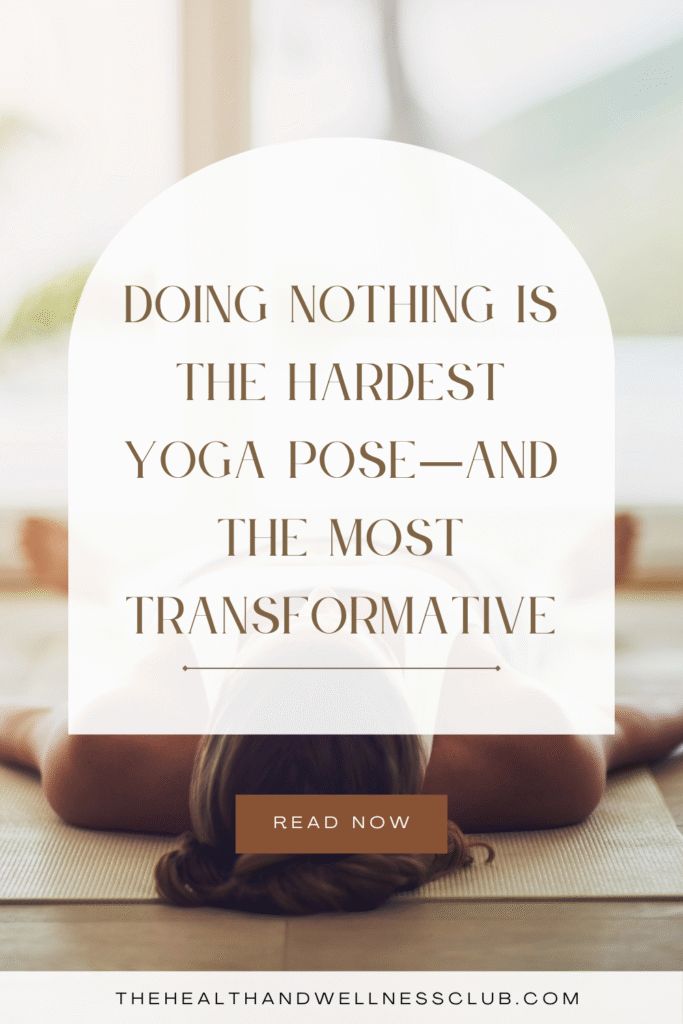
Why Savasana Feels So Good (Even If You Don’t Know Why)
Ever notice how you feel lighter, calmer, and more grounded after savasana? That’s not just in your head.
- Your cortisol levels drop, reducing stress.
- Your breath deepens, which signals safety to your brain.
- Your muscles soften, releasing tension you didn’t even know you were holding.
It’s like pressing a reset button for your entire body.
Common Misconceptions About Savasana
Let’s clear up a few things:
“It’s Just Lying Down”
Nope. It’s intentional stillness. You’re not zoning out—you’re tuning in.
“It’s Optional”
Technically, yes. But skipping savasana is like baking a cake and not letting it cool. You miss the integration, the absorption, the magic.
“It’s Easy”
Actually, it’s one of the hardest poses. Staying present without movement or distraction takes practice.
How to Make the Most of Your Savasana
If you want to turn your savasana into a truly transformative experience, try these tips:
- Set the mood: Dim the lights, play soft music, or use an eye pillow.
- Focus on your breath: Let it be slow, deep, and effortless.
- Scan your body: Mentally check in from head to toe.
- Let go of control: Don’t try to “do” anything. Just be.
Savasana in Everyday Life
Here’s the beautiful part: you don’t need a full yoga class to practice savasana. You can lie down for 5–10 minutes at the end of your day, after a workout, or even during a stressful moment.
I’ve done savasana on my living room floor, in hotel rooms, or when I am travelling around the world. It’s my go-to tool for resetting my nervous system and reconnecting with myself.
Final Thoughts: Doing Nothing Is a Skill
Savasana teaches us that stillness is powerful. In a world that glorifies hustle and productivity, this pose reminds us that healing happens in rest. Growth happens in pause. And clarity comes when we stop chasing it.
So next time you roll up your mat, don’t skip savasana. Embrace it. Let it hold you. Let it teach you that doing nothing is sometimes the most powerful thing you can do.
